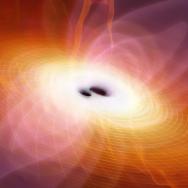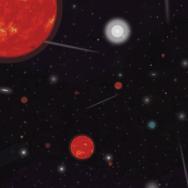But the next phase, which is projected to see first light in the late 2020s, will provide much more sensitivity—requiring new telescopes working in concert, as well as a much larger science team.
The new CMB-S4 telescopes will be deployed to the South Pole and to the Atacama Desert in Chile—two places whose cold, dry climates offer the best sky viewing on Earth. They will allow CMB-S4 to boost the precision of its map by more than an order of magnitude past the best readings we have today.
The initial $4 million from the National Science Foundation will complement funding from the U.S. Department of Energy to support the design of the project. CMB-S4 will be a massive, multi-institutional effort over the next decade, with a total cost of the order of half a billion dollars. The project will involve multiple universities as well as the Department of Energy’s national laboratories. The CMB-S4 collaboration consists of 200 scientists from over 70 institutions spread across 12 countries.
This incredible precision will enable physicists to look for evidence of ancient gravitational waves—ripples in the fabric of space-time created by the Big Bang—as well as insights into the elusive question of how to tie the force of gravity and the theory of quantum mechanics together. It also may provide fodder for the search for dark matter, a mysterious substance that pervades the universe, but has yet to be detected directly.
Astronomers will also find a trove of information about stars, galaxies and clusters in the CMB-S4 data—for example, cosmic microwave background observations from the South Pole Telescope and the Chilean Atacama Cosmology Telescope have made numerous discoveries, including record-breaking massive clusters of galaxies and ancient stellar nurseries.
The University of Chicago has a long history of working at the Amundsen-Scott South Pole Station, which is managed by the National Science Foundation. The design team will also work with Associated University, Inc., which will coordinate the CMB-S4 plans for Chile.
“We’ve learned an incredible amount from measurements of the cosmic microwave background, including discoveries that have pointed the way to new physics, but we have really only begun to tap the information that’s encoded there,” said CMB-S4 co-spokesperson Julian Borrill from DOE’s Lawrence Berkeley National Laboratory. “This will be a major leap forward for the entire physics and astronomy community.”
The award is being made from a new NSF program for Mid-scale Research Infrastructure. “These awards represent the first in NSF’s agency-wide effort to support the mid-range infrastructure that will be invaluable to strengthening the U.S. scientific research enterprise,” said Jim Ulvestad, the National Science Foundation’s chief officer for research facilities. “The funded projects include an impressive collection of new design efforts and advanced instrumentation. These projects fill gaps and provide unique research capabilities for the U.S. that will engage many early-career scientists and engineers in the pursuit of groundbreaking discoveries.”












 —Prof. Kunle Odunsi
—Prof. Kunle Odunsi
